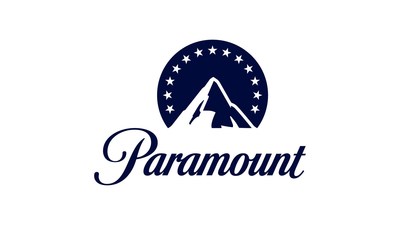Supply Chain at Paramount

Originally published in Paramount's 2021-2022 Environmental, Social, and Governance Report
As with other companies that have no significant manufacturing or extracting operations, the vast majority of our emissions are indirect and through our value chain. As a result, this area is a significant focus of our work. Our ESG strategy includes a focus on mitigating environmental and social impacts in our supply chain. We also work proactively toward deepening overall transparency and supplier diversity.
Paramount’s supply chain primarily relies on the people who help create and produce our content, from writers and producers to on-screen talent and an extensive network of production crews. We also engage with specialized technology, materials, and service providers associated with the production and distribution of our films and shows. As our company pivots toward a greater focus on streaming, we are also taking steps to understand the environmental and social impacts of those platforms. The media industry is still working to understand the impact of the downstream digital media value chain, and we are actively keeping up with the methodologies under development. We are working with our technology vendor teams and content delivery network partners to understand the largest impacts associated with streaming and to identify sustainable solutions. This section covers products and services procured for Paramount productions, operations, and facilities. For more information on our approach to managing the impact of our consumer products business, please refer to the following report chapter here.
Mapping Our Supply Chain: Environmental Impacts
We continually work to better understand the impacts of our supply chain. This includes accurately measuring and reporting Scope 3 emissions across our value chain, which is an important part of our continued work to set an emissions reduction target under the Science Based Targets initiative.
In 2021, we built upon previous work to expand and improve reporting on Scope 3 emissions as it relates to our suppliers. We use the GHG Protocol, the most commonly used GHG calculation framework, to estimate our supply chain emissions using spend. To do so, we use databases that provide emissions factors of the average amount of carbon dioxide per dollar spent for a wide variety of industries and products. While we recognize that the values are ultimately estimated, we are following a standard process for companies in our industry and will continue to improve the accuracy of our GHG inventory over time.
We are currently working to map our Scope 3 impacts – on an aggregated basis, estimated based on expenses – to more granular business units and vendors. Working from this estimate, we then identify suppliers that can provide actual consumption and emissions data, based on spend level and our ability to impact their emissions reductions. In 2021, we increased the number of suppliers providing data, including partners providing office supplies and production shipping and distribution services, so that we could measure emissions from purchased goods and services. We are working to continually engage more vendors each year, while considering at what point vendors are on their sustainability journeys.
As streaming becomes a greater focus of our company, we are attuned to the environmental impacts of this technology. Our streaming platforms include Paramount+, Pluto TV, Showtime OTT, BET+, Noggin, and others.
Although the content we produce does not directly consume electricity, it does so indirectly through the video players and display screens required to view our content. We have reported the emissions to manufacture our home video discs as part of a lifecycle approach to assessing the impacts of our content across certain consumption modes. These emissions are counted as fueland-energy related activities. We also continue to report emissions from the transportation and distribution of Simon & Schuster products and Paramount Pictures theatrical displays.
Sourcing and Procurement
In 2021, we created a new position for a sustainable sourcing lead to oversee responsible and sustainable procurement for the company. With this dedicated resource, we are working to establish new strategies around sustainable sourcing and procurement, and lead initiatives that support Paramount’s sustainability and ESG commitments with new and existing partners. The sustainable sourcing lead works directly with the Paramount ESG team and Global Sourcing leadership to create company-wide ESG goals and works with Global Sourcing teams to develop supplier strategies and execution plans to ensure achievement of goals.
In Paramount’s automated Request for Proposals (eRFPs) process, conducted by our Global Sourcing team, all participating bidders are requested to respond to ESGspecific questions as part of the bid response. In 2021, of the 68 eRFPs conducted and 273 participating bidders, 45% of bidders responded that they have an Environmental Policy, and 39% indicated they have a Sustainability Program.
In May of 2022, we added Sustainable Sourcing language to our updated Global Sourcing and Procurement Policy, covering the Sourcing and Procurement of Production and Non-Production goods and services.
We manage our procurement across six regions – North America, Europe, Australia and New Zealand, South America, Asia, and the Middle East and Africa. The bulk of our spending is in the U.S., where we produce most of our content and have our largest corporate office facilities.
Learn more in Paramount's 2021-2022 Environmental, Social, and Governance Report

